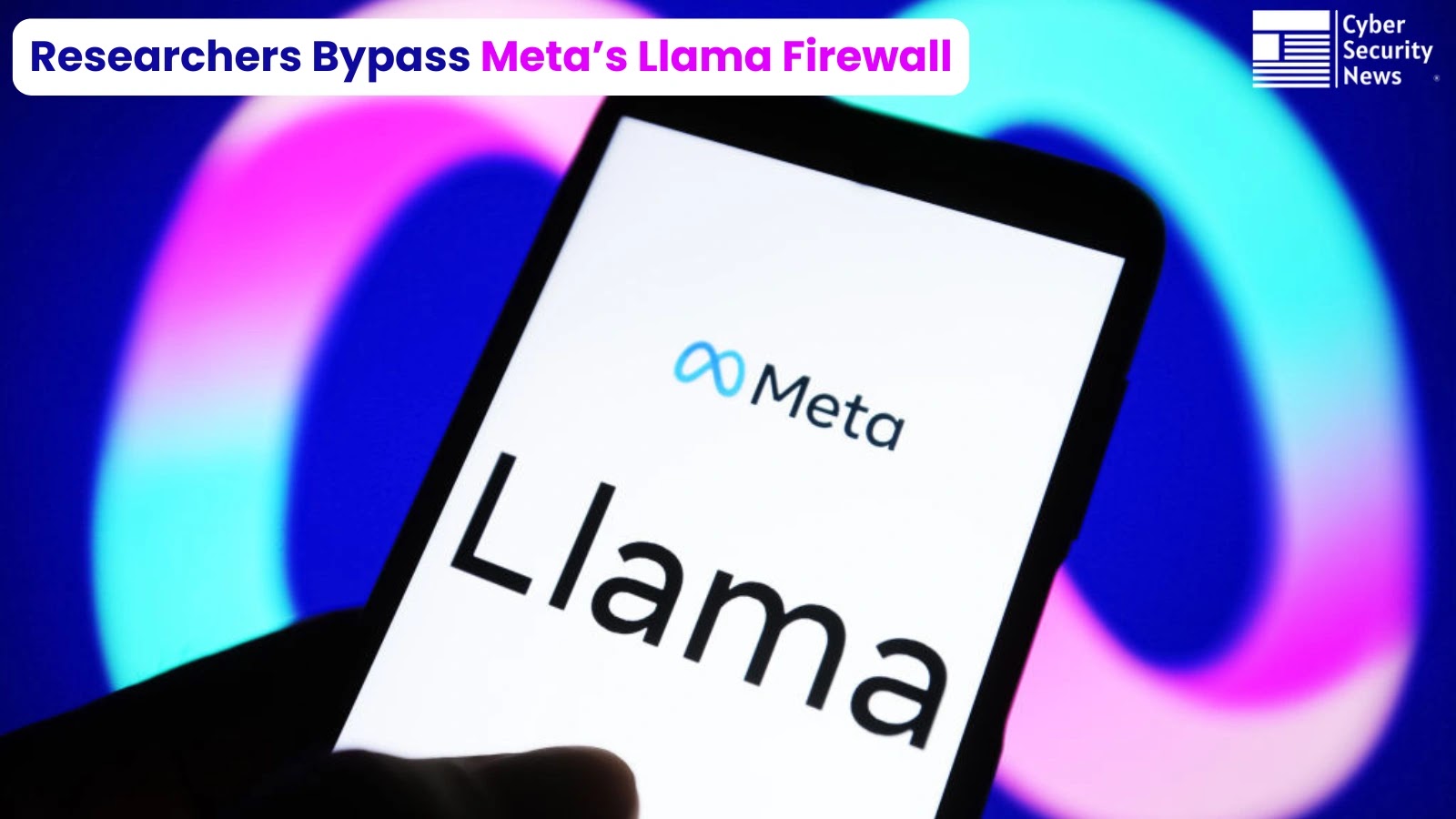
Meta’s Llama Firewall Bypassed Using Prompt Injection Vulnerability
In the rapidly expanding landscape of artificial intelligence, the security of Large Language Models (LLMs) has become a paramount concern. Enterprises are increasingly integrating LLMs into critical workflows, making their inherent vulnerabilities a significant risk. A recent discovery by Trendyol’s application security team has critically exposed the limitations of Meta’s Llama Firewall, demonstrating its susceptibility to sophisticated prompt injection attacks. This finding sends a clear signal: current LLM security measures require urgent re-evaluation and reinforcement.
The Evolving Threat of Prompt Injection in LLMs
Prompt injection is a rapidly evolving attack vector that manipulates an LLM’s input prompt to achieve unintended or malicious outputs. Unlike traditional cyberattacks that target infrastructure or code, prompt injection targets the logic and data flow within the LLM itself. Attackers can coerce the model into revealing sensitive information, generating harmful content, or performing actions it was not designed for. This particular vulnerability, while not yet assigned a specific CVE, highlights a critical design flaw in protective mechanisms intended to robustly secure LLM applications.
Meta’s Llama Firewall: An Overview and Its Shortcomings
Meta’s Llama Firewall was designed as a protective layer to safeguard LLM applications built upon the Llama model, aiming to mitigate risks like prompt injection. Its purpose is to filter malicious inputs and outputs, acting as a gatekeeper between the user and the core language model. However, Trendyol’s security researchers successfully demonstrated a series of bypass techniques that rendered these protections unreliable. This suggests that the firewall’s detection mechanisms, likely relying on pattern matching or heuristic analysis, were insufficient against carefully crafted and obfuscated injection attempts. The implications are significant: without adequate defenses, even enterprise-grade LLM deployments are exposed to data exfiltration, unauthorized access, and operational disruption.
Trendyol’s Findings: A Detailed Look at the Bypass
Trendyol’s application security team identified multiple vectors to circumvent Meta’s Llama Firewall. While the specific methodologies for their bypasses were not detailed in the initial public disclosure, such attacks typically exploit the LLM’s inherent flexibility and its ability to interpret natural language in unexpected ways. Common prompt injection techniques include:
- Role Hijacking: Forcing the LLM to adopt a malicious persona or internal configuration.
- Instruction Overriding: Embedding new, malicious instructions within legitimate prompts that take precedence over the model’s original programming.
- Data Exfiltration Through Output Manipulation: Tricking the LLM into outputting sensitive internal data as part of a seemingly innocuous response.
- Adversarial Prompting: Using specific linguistic patterns or token combinations that bypass filters without being flagged.
The success of these bypasses indicates that Meta’s Llama Firewall, despite its intent, lacked the contextual understanding or robust sanitization necessary to distinguish malicious intent from legitimate user interaction when faced with sophisticated adversarial prompts. This raises fresh concerns about the readiness of existing LLM security measures.
Remediation Actions for LLM Deployments
Given the demonstrated vulnerabilities, organizations deploying LLMs must immediately re-evaluate their security postures and implement robust remediation strategies. Simply relying on a single “firewall” layer is insufficient. A multi-layered defense-in-depth approach is crucial:
- Input Validation and Sanitization: Implement strict and comprehensive input validation beyond simple keyword filtering. Consider advanced natural language processing (NLP) techniques to identify and neutralize malicious prompt components before they reach the LLM.
- Output Filtering and Redaction: Filter and sanitize LLM outputs to prevent sensitive data leakage or the generation of harmful content. Implement content moderation and PII detection mechanisms.
- Principle of Least Privilege: Limit the LLM’s access to external systems and sensitive data. Configure the LLM to operate with the minimum necessary permissions.
- Continuous Monitoring and Logging: Implement comprehensive logging of all LLM inputs and outputs. Establish robust monitoring systems to detect anomalies and potential injection attempts in real-time.
- Adversarial Testing and Red Teaming: Proactively engage in red team exercises and adversarial testing specifically focused on prompt injection. Leverage security researchers and ethical hackers to identify unforeseen bypasses.
- Model Fine-tuning and Hardening: Explore fine-tuning LLMs with datasets designed to improve their resilience against prompt injection, teaching them to ignore or flag malicious instructions.
- Responsible AI Development Guidelines: Adhere to evolving industry best practices and guidelines for secure and responsible AI development.
Tools for LLM Security and Prompt Injection Defense
Organizations can leverage various tools and frameworks to bolster their LLM security and mitigate prompt injection risks:
| Tool Name | Purpose | Link |
|---|---|---|
| OWASP Top 10 for LLMs | Comprehensive guide to the most critical LLM security risks. | https://llmtop10.com/ |
| Garak.ai | Automated security testing for LLMs, including prompt injection. | https://garak.ai/ |
| Adversarial ML Threat Matrix (MITRE ATLAS) | Knowledge base of attack techniques against ML systems. | https://atlas.mitre.org/ |
| ProwlerFlow (Example) | Prompt security and validation for LLMs (example of a category, specific tools vary). | (Refer to vendor documentation for specific tools) |
| Hugging Face Transformers (Security features) | Framework offering some built-in security considerations and tools for model hardening. | https://huggingface.co/docs/transformers/index |
Conclusion
The discovery by Trendyol’s security team regarding the bypass of Meta’s Llama Firewall serves as a critical wake-up call for the cybersecurity industry and organizations integrating LLMs. It unequivocally highlights that current LLM security mechanisms are not yet resilient enough against sophisticated, real-world prompt injection attacks. As LLMs become more central to business operations, the urgency for robust, multi-layered defenses intensifies. Proactive adversarial testing, continuous monitoring, and a commitment to secure AI development practices are not merely recommendations; they are essential requirements for navigating the evolving threat landscape of large language models.





